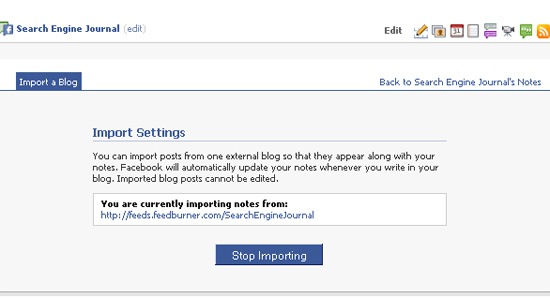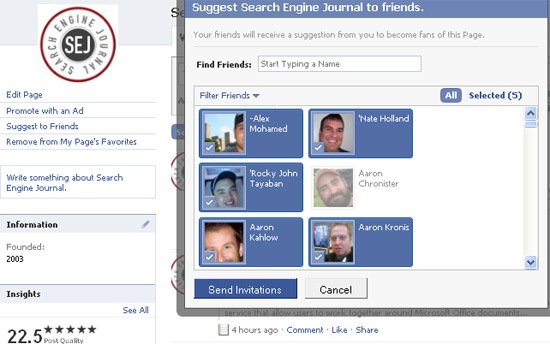Improve Your Google Rankings in One Easy Step


Step #1
Step #2
Step #3


Posted by Kishore 2 comments
Labels: Google Rankings. google updates, Improve Your Google Rankings, latest google updates
Related articles:






Posted by Kishore 0 comments
Labels: facebook, Facebook Promotion, Off page promotion, Online seo training, web promotion, web traffic promotion
Related articles:
Posted by Kishore 0 comments
Labels: addons, latest seo updates, Online seo training, seo addons, seo online training, SEO updates, Top 10 Firefox Addons for SEO
Related articles:
Posted by Kishore 0 comments
Labels: SEO Strategies 2010, SEO Trends 2010, SEO Trends and Strategies
Related articles:
Posted by Kishore 2 comments
Labels: blog promotion, blogs updates, latest seo updates, promotion vis social networking sites, Social bookmarking, Social Networking Sites
Related articles:
Google Blog Search is an invaluable tool for searching news and views off the beaten track. It scans the blog posts of the great and the good, spanning major companies to everyday journal writers.
Today Google have announced some key changes to the service. The alterations should make searching easier, more intuitive and user-friendly. The most notable key addition is the introduction of an RSS feed. This will provide quick updates straight to your feed reader on any number of desired topics.
As with other trending sites, including Twitter and Blogpulse, Google Blog Search now also includes Hot Queries. This will give you a rundown of the most popularly searched for terms, whilst Latest Posts notes the most popular stories being discussed.
No doubt further integration with the likes of Reader and iGoogle will come about, but Blog Search should now be a far more accessible tool. If you haven’t used it before, it’s well worth a look.
Follow this link for the complete Google Blog announcement.
Posted by Kishore 1 comments
Labels: blog search, google blog, Google Blog Search, Google News, latest seo updates
Related articles:
Posted by Kishore 1 comments
Labels: Online seo training, seo online, SEO Optimization, SEO updates
Related articles:
Posted by Kishore 2 comments
Labels: Google Color Interface, google search, Google Search in Color Interface
Related articles:
Posted by Kishore 0 comments
Labels: back link building, How to Get Website Traffic, Online seo training, PPC, SBM, traffic to site, traffic website, web traffic, website traffic
Related articles:
Google Site Search tracking is a valuable tool, however it requires that your site search keyword is contained in your URL. What if your website platform doesn't support this?
There is a solution. It's not pretty and its even a little bit technical, but it's possible.
Firstly, you need access to your websites template files, and in particular the template that displays search results.Secondly, you need to be able to "inject" the search keyword into the template file.
If you are confident with the above, forge ahead. If not, talk to your web developer as these changes should be relatively straight forward for someone with experience.
Step 1
The first step is to add the following line of code to your existing Google Analytics tracking code:
pageTracker._trackPageview('/search?q=[keyword]');
Your tracking code should look something like this:
<script type="text/javascript">
var gaJsHost = (("https:" == document.location.protocol) ? "https://ssl." : "http://www.");
document.write(unescape("%3Cscript src='" + gaJsHost + "google-analytics.com/ga.js' type='text/javascript'%3E%3C/script%3E"));
</script>
<script type="text/javascript">
try {
var pageTracker = _gat._getTracker("UA-635744-1");
pageTracker._trackPageview();
pageTracker._trackPageview('/search?q=[keyword]');
} catch(err) {}</script>
Step 2
Next, we need to replace [keyword] with the actual keyword being searched for. The method in which you do this will vary depending on the website platform you use. A PHP platform might handle it something like this:
pageTracker._trackPageview('/search?q=<?php echo $keyword; ?>');
Where $keyword contains the keyword string used.
Step 3
Lastly, we need to tell Google Analytics to look out for the query string used, which in the example above is simply 'q'. This needs to be placed into the "Query Paramater" box in the Site Search section in your Google Analytics profile:

Posted by Kishore 1 comments
Related articles: